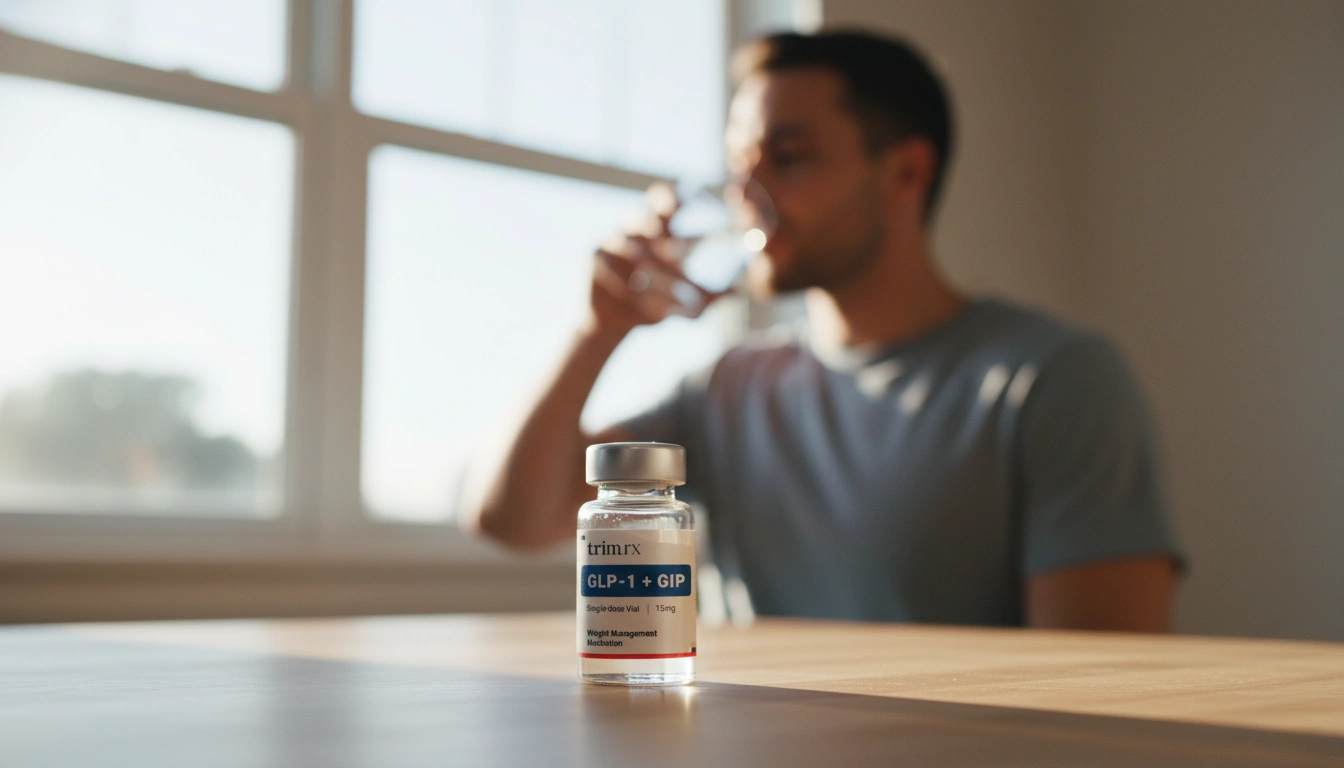How Long Have GLP-1 Medications Been Around? A Deep Dive into Their Evolution and Impact

Introduction
In the fight against obesity and diabetes, the emergence of GLP-1 medications represents a significant milestone. As obesity rates continue to rise, affecting over 42% of adults in the United States alone, the need for effective treatments has never been more pressing. The journey of GLP-1 medications reflects both the challenges and triumphs of medical science, showcasing how a deeper understanding of biology can lead to innovative solutions for complex health issues.
The story of GLP-1 medications begins with the discovery of incretin hormones in the early 20th century. These hormones play a crucial role in insulin regulation and appetite control. The development of GLP-1 receptor agonists (GLP-1 RAs) has transformed treatment protocols for type 2 diabetes and, more recently, for obesity management.
In this blog, we will cover the following key aspects:
- The discovery and evolution of GLP-1.
- The clinical applications of GLP-1 medications.
- The impact of GLP-1 drugs on weight loss and diabetes management.
- The emergence of new GLP-1 medications and their potential future applications.
- How TrimRx can assist you on your weight loss journey with personalized solutions.
By the end of this post, we hope you will gain valuable insights into how long GLP-1 medications have been around, their effectiveness, and their relevance to your health journey.
When we think about the evolution of medical treatments, it’s fascinating to consider how some of our most effective therapies have their roots in early scientific discoveries. One such example is the GLP-1 (glucagon-like peptide-1) medications, which have significantly influenced the landscape of diabetes management and weight loss. Did you know that GLP-1 itself was discovered over three decades ago? In this blog, we’ll explore the timeline of GLP-1 medications, tracing their journey from humble beginnings to their pivotal role in contemporary obesity treatments.
We’ll examine their mechanism of action, the history behind their development, current applications, and the significant impact they have made in the fight against obesity and diabetes. By the end of this post, you’ll have a comprehensive understanding of how long GLP-1 medications have been around and their relevance in today’s healthcare landscape.
The Discovery of GLP-1: A Historical Perspective
The journey of GLP-1 medications begins with the pioneering work on incretin hormones, which started in the late 19th century. Incretins are hormones produced in the gut that stimulate insulin secretion in response to meals. The first incretin identified was glucose-dependent insulinotropic polypeptide (GIP) in 1970, but it wasn’t until 1984 that glucagon-like peptide-1 (GLP-1) was discovered.
GLP-1 is secreted by the intestinal L-cells in response to nutrient intake and has several physiological effects, including:
- Stimulating insulin secretion from the pancreas.
- Inhibiting glucagon release, which helps lower blood sugar levels.
- Slowing gastric emptying, promoting a feeling of fullness.
Despite its discovery in the 1980s, initial enthusiasm for GLP-1 was limited, as research primarily focused on diabetes management. However, the landscape began to change in the early 2000s when studies revealed that GLP-1 could also promote significant weight loss in people with type 2 diabetes.
The Approval of GLP-1 Medications
The first GLP-1 receptor agonist, Exenatide (Byetta), was approved by the FDA in April 2005 for the treatment of type 2 diabetes. This marked a new era in the management of diabetes, as it was the first medication that mimicked the effects of GLP-1.
Following Exenatide, several other GLP-1 RAs were introduced to the market:
- Liraglutide (Victoza) in 2010, which also demonstrated weight loss benefits.
- Dulaglutide (Trulicity) in 2014, offering a once-weekly option.
- Semaglutide (Ozempic) in 2017, which has gained significant attention due to its efficacy in both diabetes management and weight loss.
The landmark approval of Saxenda (liraglutide) in 2014 marked the first GLP-1 medication specifically approved for weight management, showcasing the versatility of GLP-1 RAs beyond diabetes treatment. This paved the way for subsequent approvals of medications like Wegovy (semaglutide) in 2021, reinforcing the role of GLP-1 medications in obesity management.
Mechanism of Action: How GLP-1 Medications Work
Understanding how GLP-1 medications work is crucial to appreciating their impact on health. GLP-1 RAs mimic the action of natural GLP-1 in the body, resulting in several beneficial effects:
- Increased Insulin Secretion: In response to meals, GLP-1 enhances glucose-dependent insulin secretion from pancreatic beta cells.
- Decreased Glucagon Secretion: By inhibiting glucagon release, GLP-1 helps lower blood glucose levels.
- Slower Gastric Emptying: This effect prolongs the feeling of fullness after eating, reducing calorie intake.
- Brain Signaling: GLP-1 receptors in the brain can influence appetite regulation, further promoting weight loss.
These combined effects make GLP-1 medications a powerful tool in the management of both diabetes and obesity. As we explore their applications, it is essential to recognize the significant weight loss observed in many patients using GLP-1 RAs, which has contributed to their growing popularity.
The Impact of GLP-1 Medications on Weight Loss and Diabetes Management
With the escalating rates of obesity and type 2 diabetes, GLP-1 medications have emerged as vital components of treatment strategies. Their ability to promote weight loss while effectively managing blood glucose levels has garnered attention from both healthcare providers and patients.
Weight Loss Success
Clinical trials have consistently shown that GLP-1 medications lead to substantial weight loss in individuals with obesity. For instance, studies have indicated that patients using semaglutide can achieve an average weight loss of around 15% of their initial body weight. This is particularly significant considering that traditional weight loss methods often yield modest results.
The mechanisms through which GLP-1 medications promote weight loss include:
- Enhanced Satiety: By slowing gastric emptying and acting on appetite centers in the brain, these medications help individuals feel full sooner and for longer periods.
- Reduced Cravings: GLP-1 medications can reduce cravings for high-calorie foods, making it easier for individuals to adhere to healthier eating patterns.
- Improved Metabolic Health: Beyond weight loss, GLP-1 medications can lead to improvements in metabolic parameters, such as blood pressure and cholesterol levels, contributing to overall health.
Diabetes Management
GLP-1 medications have revolutionized diabetes management by providing an effective means of controlling blood glucose levels while simultaneously promoting weight loss. Research supports their use as first-line treatments for type 2 diabetes, particularly for individuals who are overweight or obese.
The dual benefits of GLP-1 medications make them particularly appealing:
- Reduced Risk of Hypoglycemia: Unlike some diabetes medications, GLP-1 RAs have a lower risk of causing hypoglycemia, making them safer options for patients.
- Cardiovascular Benefits: Clinical studies have demonstrated that GLP-1 medications can lower the risk of cardiovascular events in patients with type 2 diabetes, further highlighting their importance in comprehensive diabetes care.
The Emergence of New GLP-1 Medications
As research into GLP-1 continues, new medications and formulations are being developed to enhance effectiveness and patient adherence. Notably, the recent FDA approval of Zepbound (tirzepatide) in 2023 introduces a novel dual GLP-1/GIP (gastric inhibitory polypeptide) agonist, which has shown promising results in clinical trials for weight loss.
The introduction of combination therapies, such as tirzepatide, reflects a growing trend in obesity treatment, as they may offer enhanced efficacy compared to single-target drugs. This evolution aligns with our commitment at TrimRx to provide innovative, personalized weight loss solutions tailored to individual needs.
How TrimRx Can Help on Your Weight Loss Journey
At TrimRx, we understand that weight loss is a unique journey for each individual. Our personalized weight loss solutions leverage the latest advancements in GLP-1 medications to help you achieve your health goals safely and effectively.
Our Approach
- Personalized Assessment: Start your journey by taking our free assessment quiz to determine your eligibility for prescription weight loss medications tailored to your specific needs. You can access the quiz here.
- Comprehensive Care: Our approach includes doctor consultations, lab work, medication plans, and unlimited support to ensure you have the resources you need for success.
- Quick-Access Supplements: In addition to prescription medications, we offer quick-access supplements like GLP-1 Daily Support and Weight Loss Boost to enhance your weight loss journey.
By combining advanced medical science with empathetic care, we strive to empower you on your path to healthier living.
Conclusion
The evolution of GLP-1 medications is a testament to the remarkable advancements in medical science and our growing understanding of obesity and diabetes. From their discovery in the 1980s to their current applications in weight management and diabetes treatment, GLP-1 medications have significantly influenced healthcare.
As we continue to explore new frontiers in obesity treatment, our commitment at TrimRx remains steadfast: to provide safe, effective, and personalized weight loss solutions that empower individuals to achieve their health goals.
If you’re considering a weight loss journey or seeking support in managing diabetes, we encourage you to take our free assessment quiz to explore how our offerings can be tailored to your individual needs.
FAQ
When were GLP-1 medications first introduced?
GLP-1 medications were first introduced with the approval of Exenatide (Byetta) in April 2005, marking a significant milestone in diabetes treatment.
What are the primary uses of GLP-1 medications?
GLP-1 medications are primarily used for managing type 2 diabetes and promoting weight loss in individuals with obesity.
How do GLP-1 medications work?
GLP-1 medications stimulate insulin secretion, inhibit glucagon release, slow gastric emptying, and promote feelings of fullness, all contributing to improved blood sugar control and weight loss.
Are there any side effects associated with GLP-1 medications?
Like all medications, GLP-1 medications may have side effects, such as gastrointestinal issues. It’s essential to discuss potential risks with your healthcare provider.
How can TrimRx help me with weight loss?
TrimRx offers personalized weight loss solutions, including prescription medications and supplements, along with comprehensive support tailored to your unique needs. Take our free assessment quiz here to get started on your journey!

Transforming Lives, One Step at a Time
Keep reading
7 Tips for Sticking to GLP-1 Injection Schedules
Seven practical strategies to keep weekly GLP‑1 injections on schedule—pick a routine day, set reminders, manage side effects, rotate sites, and avoid missed doses.
Custom GLP-1 Dosing for Kidney Disease
Personalized GLP-1 dosing for CKD patients with monitoring, dehydration and hypoglycemia risk mitigation, and guidance across all kidney disease stages.
Semaglutide vs Tirzepatide: Approved Uses
Two leading diabetes and weight-loss drugs differ in FDA-approved benefits — one adds heart, kidney and liver protection; the other treats obstructive sleep apnea.



